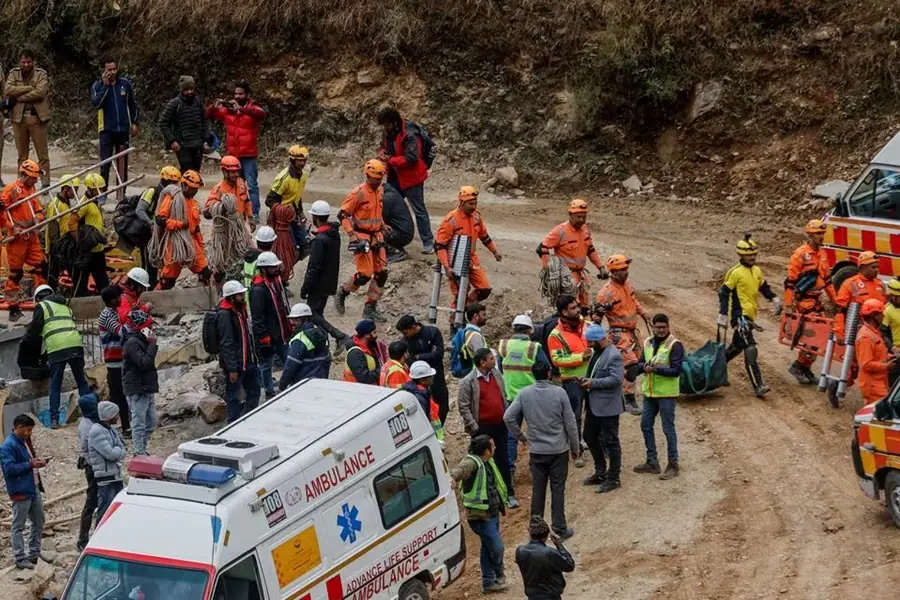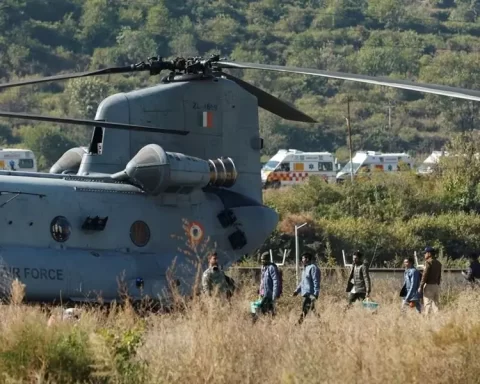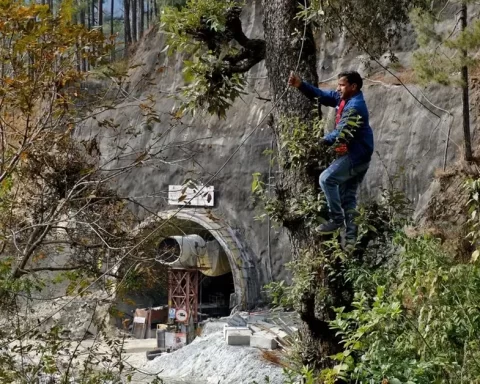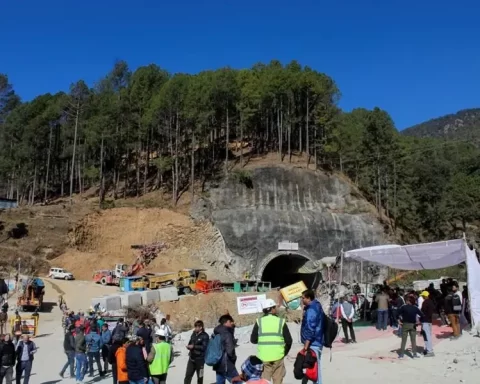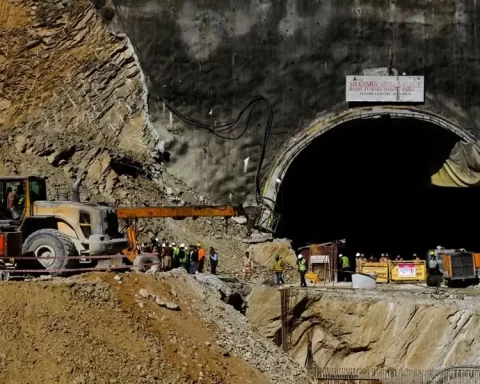SILKYARA, India, Nov 28 (Reuters) – Indian rescuers broke through rocks and debris on Tuesday to reach 41 construction workers trapped in a collapsed tunnel in the Himalayas for 17 days.
The process of pulling out the 41 labourers, one at a time on wheeled stretchers through a narrow pipe 90 cm (3 feet) wide, was due to begin soon, officials said.
Three teams, each of four rescuers, would first enter the area where the men are trapped to prepare them to be pulled, said Syed Ata Hasnain, a member of the National Disaster Management Authority that is overseeing rescue efforts.
“We have been involved in this for more than 400 hours and are taking all safety precautions until the end,” he told reporters in New Delhi, adding it would take three to five minutes to remove each of the 41 trapped labourers.
The men, low-wage workers from India’s poorest state, have been stuck in the 4.5 km (3 mile) tunnel in Uttarakhand state, in northern India, since it collapsed on Nov. 12.
They have been getting food, water, light, oxygen and medicines through a pipe but efforts to dig a tunnel to rescue them with high-powered drilling machines were frustrated by a series of snags.
Government agencies managing the unprecedented crisis turned on Monday to “rat miners” to drill through the rocks and gravel by hand from inside a 90 cm (3 feet) wide evacuation pipe pushed through the debris after machinery failed.
The miners are experts at a primitive, hazardous and controversial method used mostly to get at coal deposits through narrow passages, and get their name because they resemble burrowing rats.
The miners, brought from central India, worked through Monday night and finally broke through the estimated 60-metres of rocks, earth and metal on Tuesday afternoon.
“Work of laying pipes in the tunnel to take out workers has been completed,” Uttarakhand state chief minister Pushkar Singh Dhami said on the X social media platform, thanking the Hindu deity, Baba Baukh Nag Ji, as well as the millions of Indian who prayed for the men and the tireless rescuers.
“Soon, all the labourer brothers will be taken out.”
AMBITIOUS PROJECT
Dozens of rescue workers with ropes, ladders and stretchers entered the tunnel and 41 ambulances were lined up outside to take the 41 men to a hospital about 30 km away.
Helicopters were on standby there to fly workers to a larger hospital in the city of Rishikesh in case any of them needed specialist attention.
A makeshift medical facility with 10 beds and oxygen cylinders was also set up inside the tunnel for those who might need emergency care on site, officials said.
Some rescue workers in hard hats made victory signs and posed for pictures. Others carried marigold garlands to welcome the workers out in traditional Indian style.
Relatives of the trapped men, who have been camping near the site, were taken inside the tunnel with luggage, ready to accompany the men to hospital.
“As he comes out, my heart will revive again,” the father of a trapped worker, who give his name as just Chaudhary, said of his son, Manjeet Chaudhary.
Villagers also gathered outside the tunnel, some singing Hindu devotional songs and raising slogans in praise of the Hindu god Lord Ram on hearing news of the breakthrough.
Others gathered on nearly slopes hoping to catch a glimpse of the men as they are brought out.
The men have been getting cooked food since a lifeline pipe was pushed through last week, including flat breads, lentils and vegetable curry.
More than a dozen doctors, including psychiatrists, have been at the site, talking to the men through the pipe and monitoring their health.
They were advised to do light yoga exercises, walk around in the space they have been confined to, and keep speaking to each other.
The tunnel is part of the $1.5 billion Char Dham highway, one of Prime Minister Narendra Modi’s most ambitious projects, aimed at connecting four Hindu pilgrimage sites through an 890- km network of roads.
Authorities have not said what caused the cave-in but the region is prone to landslides, earthquakes and floods.
The tunnel did not have an emergency exit and was built through a geological fault, a member of a panel of experts investigating the disaster has told Reuters.
The Char Dham project has faced criticism from environmental experts and some work was halted after hundreds of houses were damaged by subsidence along the route.
The government has said it employed environmentally sound techniques to make geologically unstable stretches safer.
It also ordered the National Highways Authority of India (NHAI) to audit 29 tunnels being built across India.

